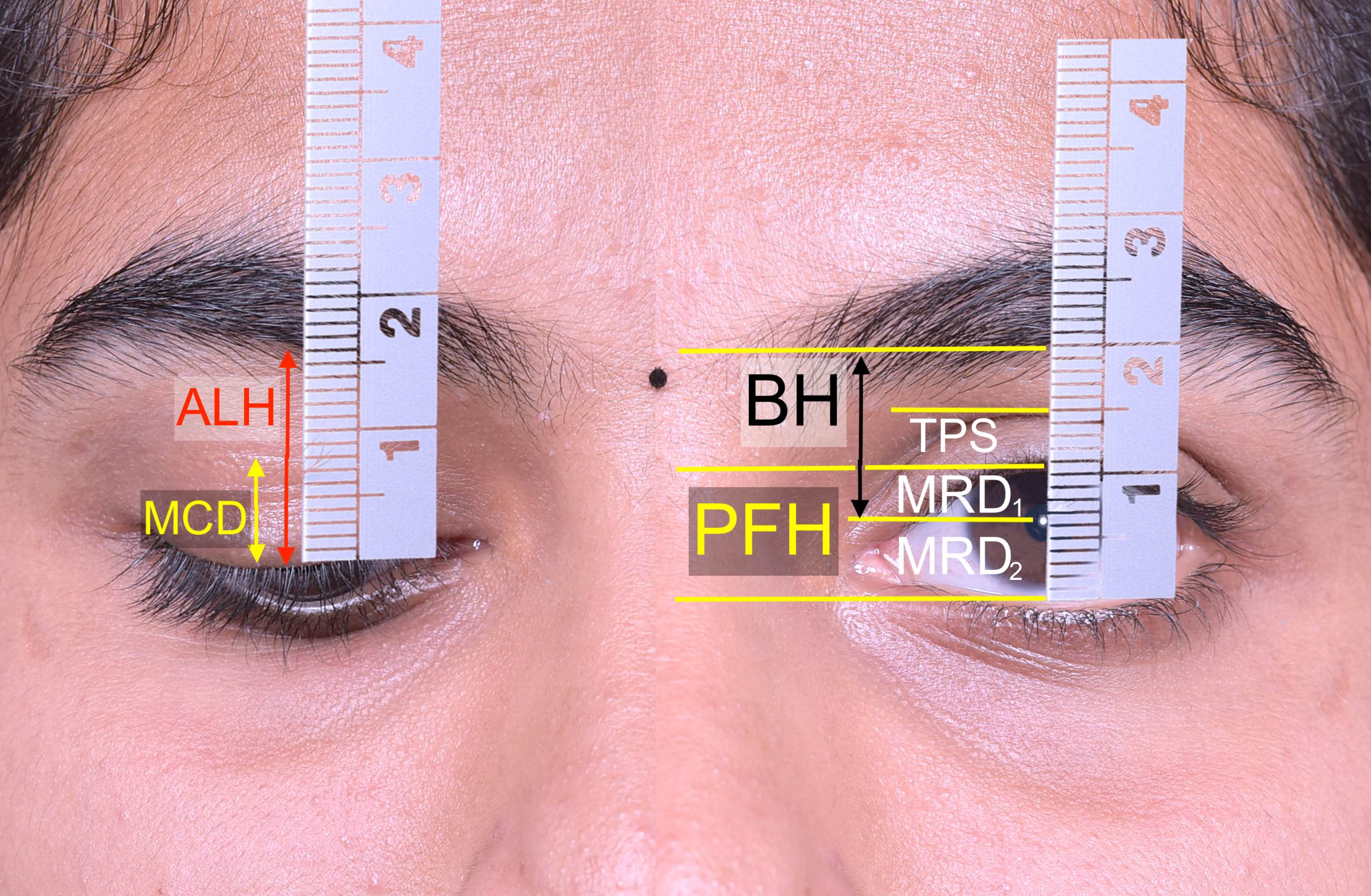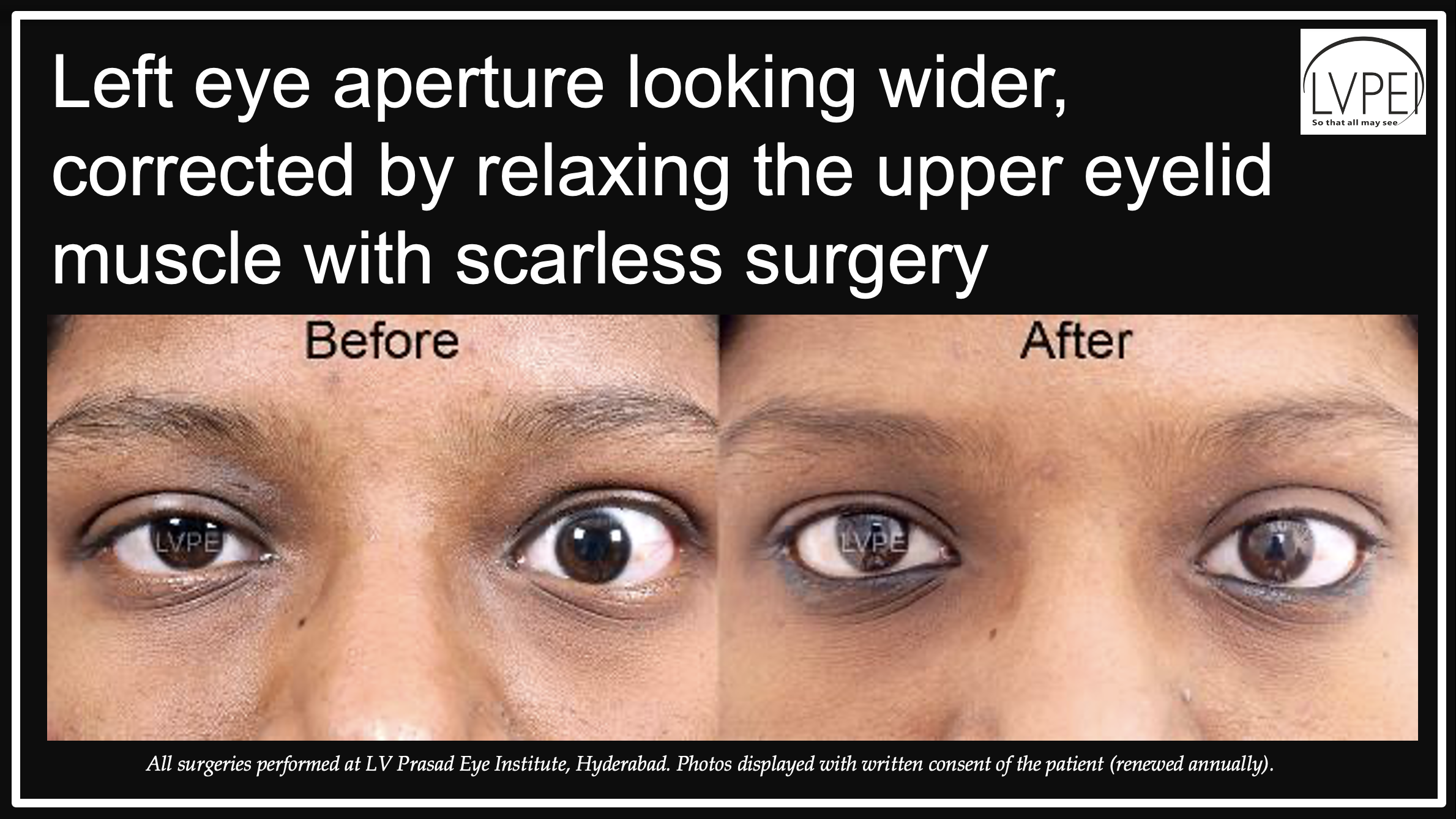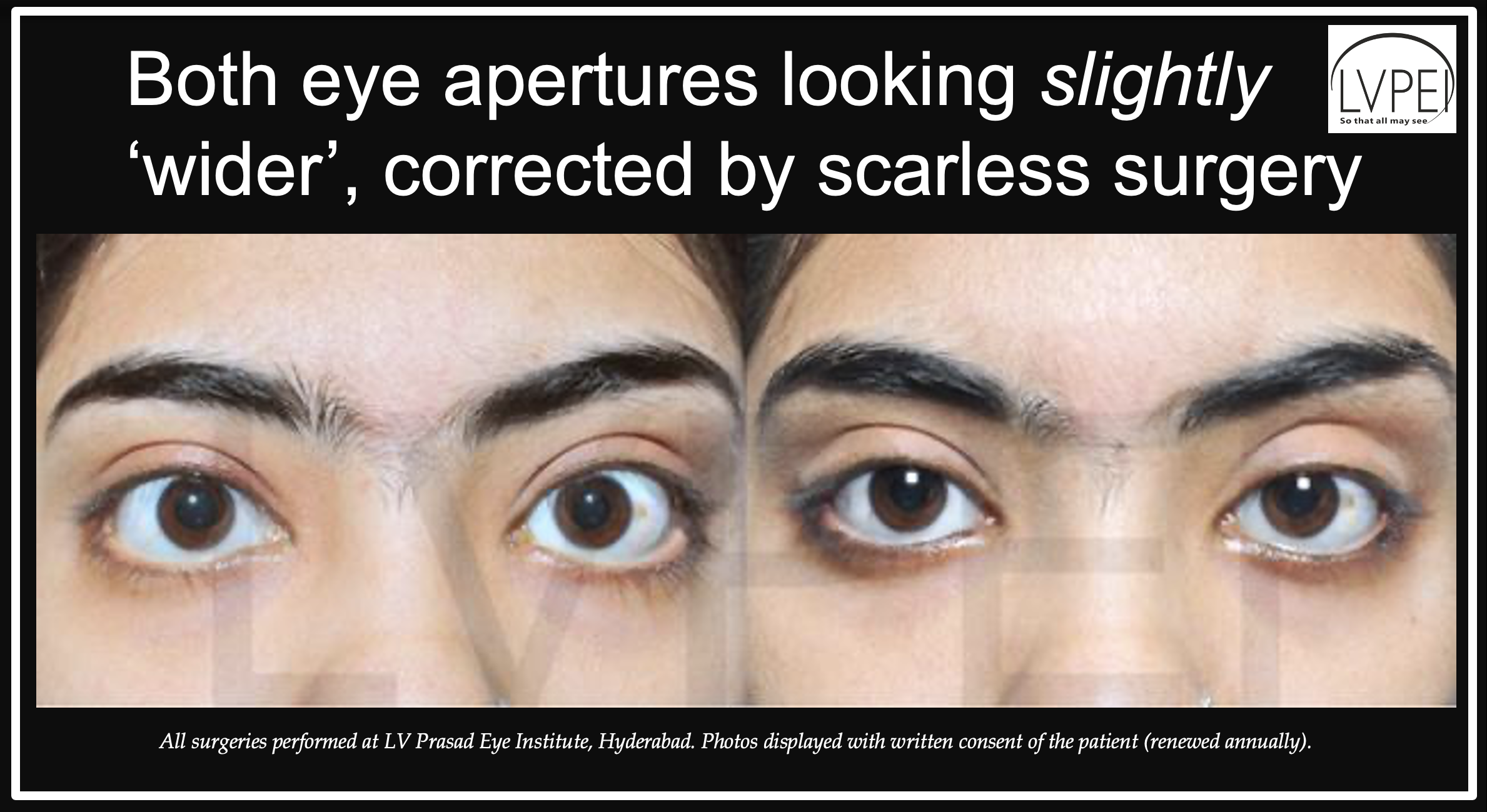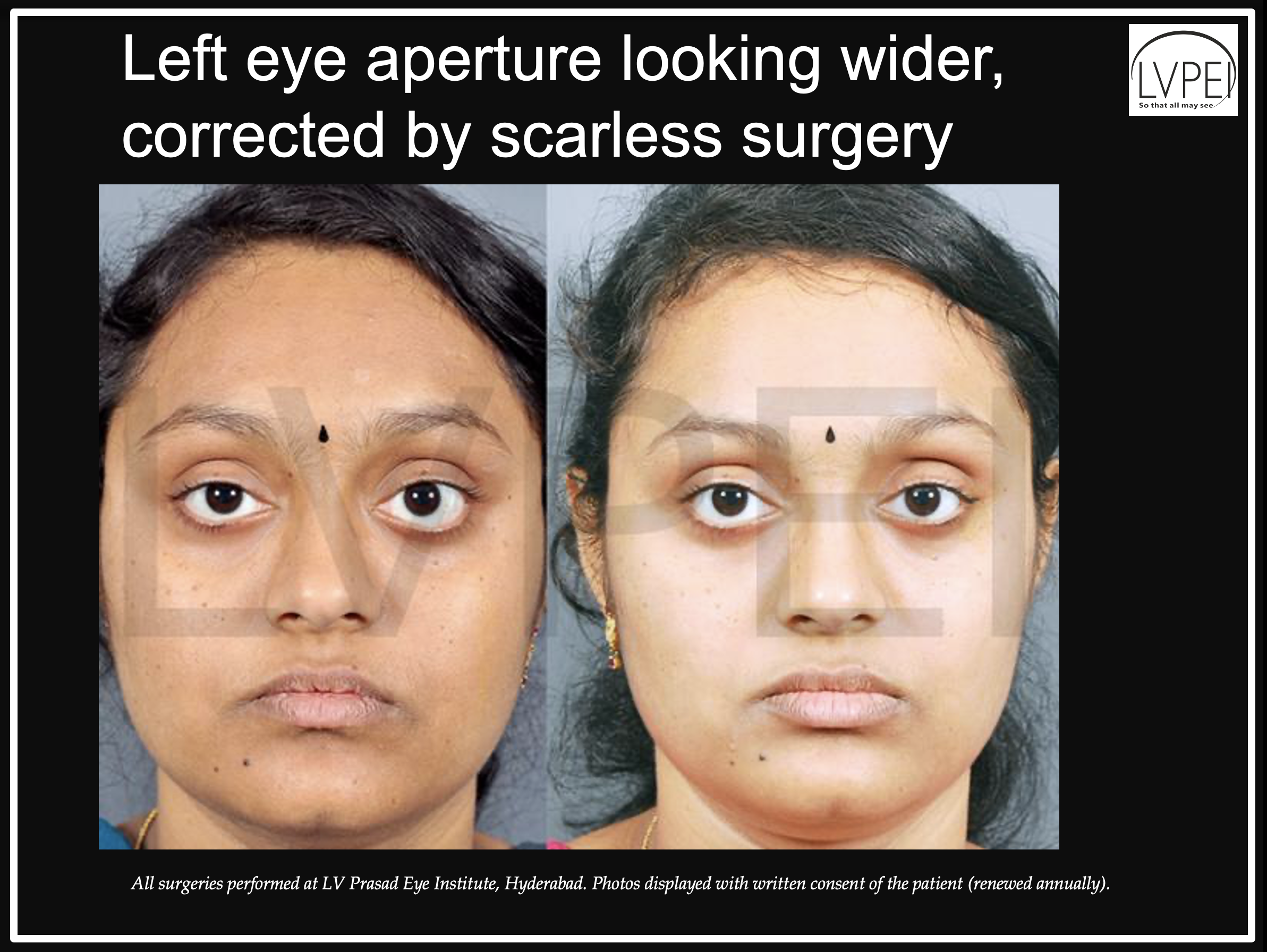 Asymmetric eyes or brows
Asymmetric eyes or brows
Eye Plastic surgery
Introduction A 'wide' looking eye (eyelid retraction) most commonly occurs due to thyroid eye disease. Rarely, it can be a hereditary finding, or due to injury. It gives an angry or scary appearance, and can even affect vision due to drying of the cornea. Mild eyelid retraction can cause dry gritty sensation, and redness, especially outdoors. In some patients, the eye can remain slightly open during sleep, leading to watery eye and disturbed sleep. Surgery can correct this problem by relaxing the muscle that is excessively pulling the eyelid up.
Consultation  Evaluation of aperture symmetry involves several critical measurements, and hence an actual check-up is far more informative than just photographs or a video consult. The aperture measurements decide the type of surgery to be performed, and also determines the scope and extent of side-effects if any. Everything that you read on internet as 'side effects of eyelid retraction surgery' may not be applicable to you.
Evaluation of aperture symmetry involves several critical measurements, and hence an actual check-up is far more informative than just photographs or a video consult. The aperture measurements decide the type of surgery to be performed, and also determines the scope and extent of side-effects if any. Everything that you read on internet as 'side effects of eyelid retraction surgery' may not be applicable to you.
Surgical Technique Several surgical options are available. The choice of surgery depends upon the cause, and severity of the droop.
1) Scarless technique (Mullerectomy): When the wide look is mild, the Muller muscle is removed from the back of the eyelid (Mullerectomy). There is no skin scar in this surgery, but this technique is only applicable to mild cases, not to all.
2) Levator muscle recession: Moderate eyelid retraction requires relaxing the main eyelid muscle that has become 'tight'. Much like loosening the string of a curtain that is pulled up. Here, we relax the muscle enough to place the eyelid back in its normal position.The scar is faint, and hidden in the eyelid fold.
3) Blepharotomy : Severe form of eyelid retraction requires a special technique where the main eyelid muscle is relaxed to its maximum possible extent. The scar is faint, and hidden in the eyelid fold.
Recovery Time Surgery for eyelid retraction can be performed as a day-care procedure under local anesthesia and takes about 30 to 45 minutes. Discomfort is minimal, and most patients are back to light work within a week. Minimal bruising may persist for 1-2 weeks. For severe eyelid retraction and for children, general anaesthesia may be preferred.
How perfect is the surgery? Correction of eyelid retraction is not an exact science. Although we do our best, results vary from person to person based on different healing patterns. Re-adjustment: In 90+ % cases, the results of this surgery give satisfying results. However, a realistic expectation is important. In 5-10% cases, this surgery may need one or two sessions of stitch adjustment (6-8 weeks after surgery). This is an add-on step, to make it better.
Will insurance cover it? Health insurance will cover the costs of eyelid retraction surgery, if it developed after birth. Retractionas a result of congenital deformity (present since birth) is not covered by most insurance policies. It is important to check these clauses in your insurance plan before proceeding with insurance claim.
Before-After photo gallery:





